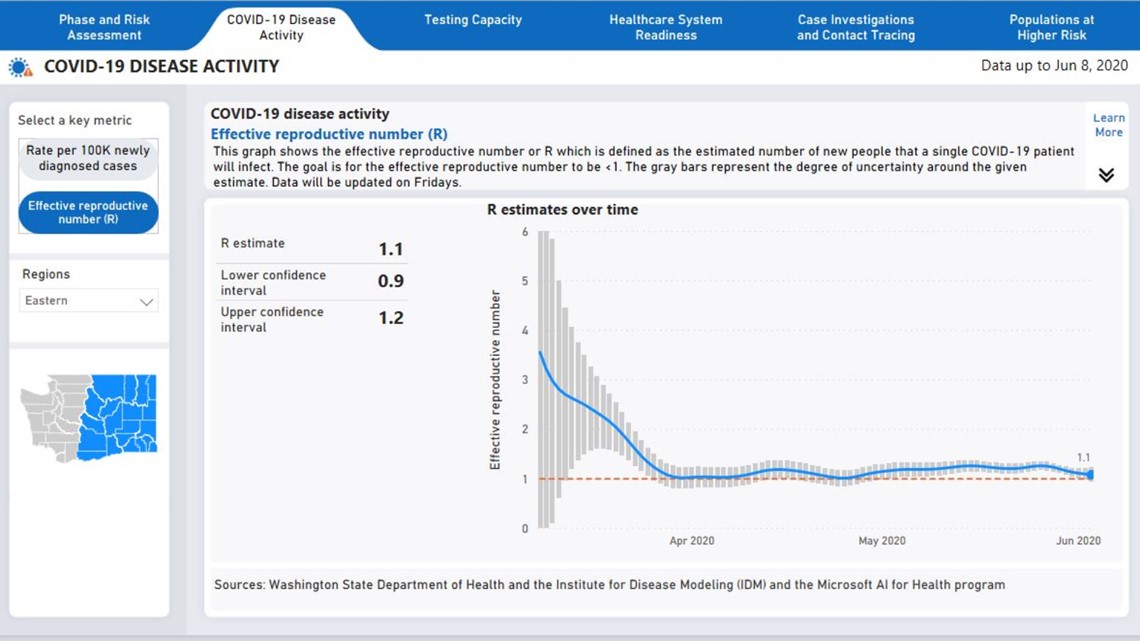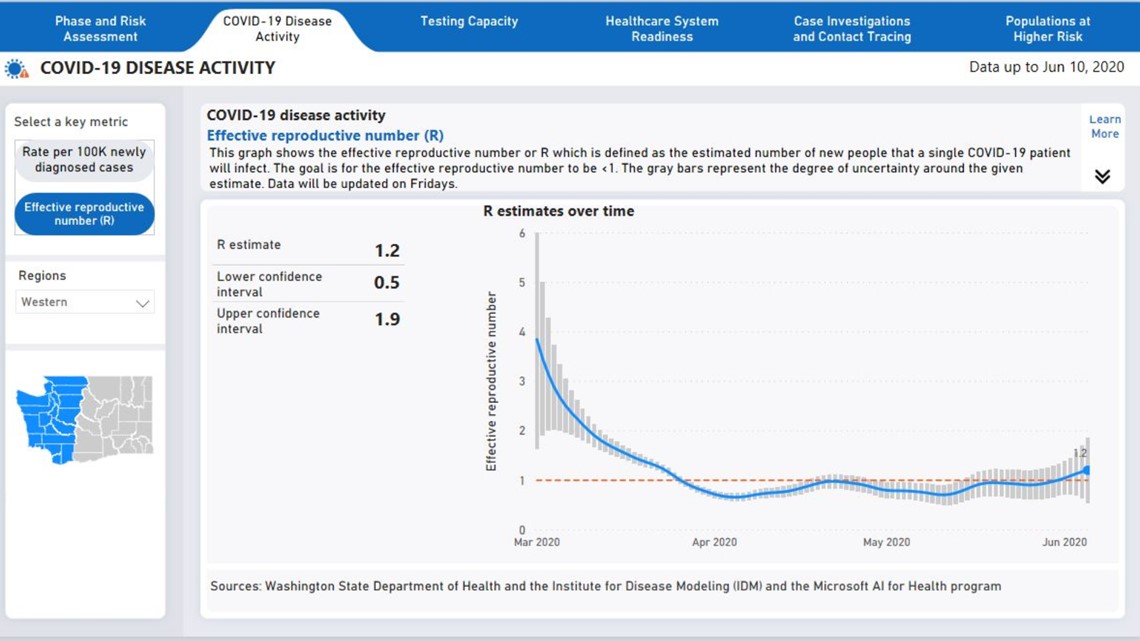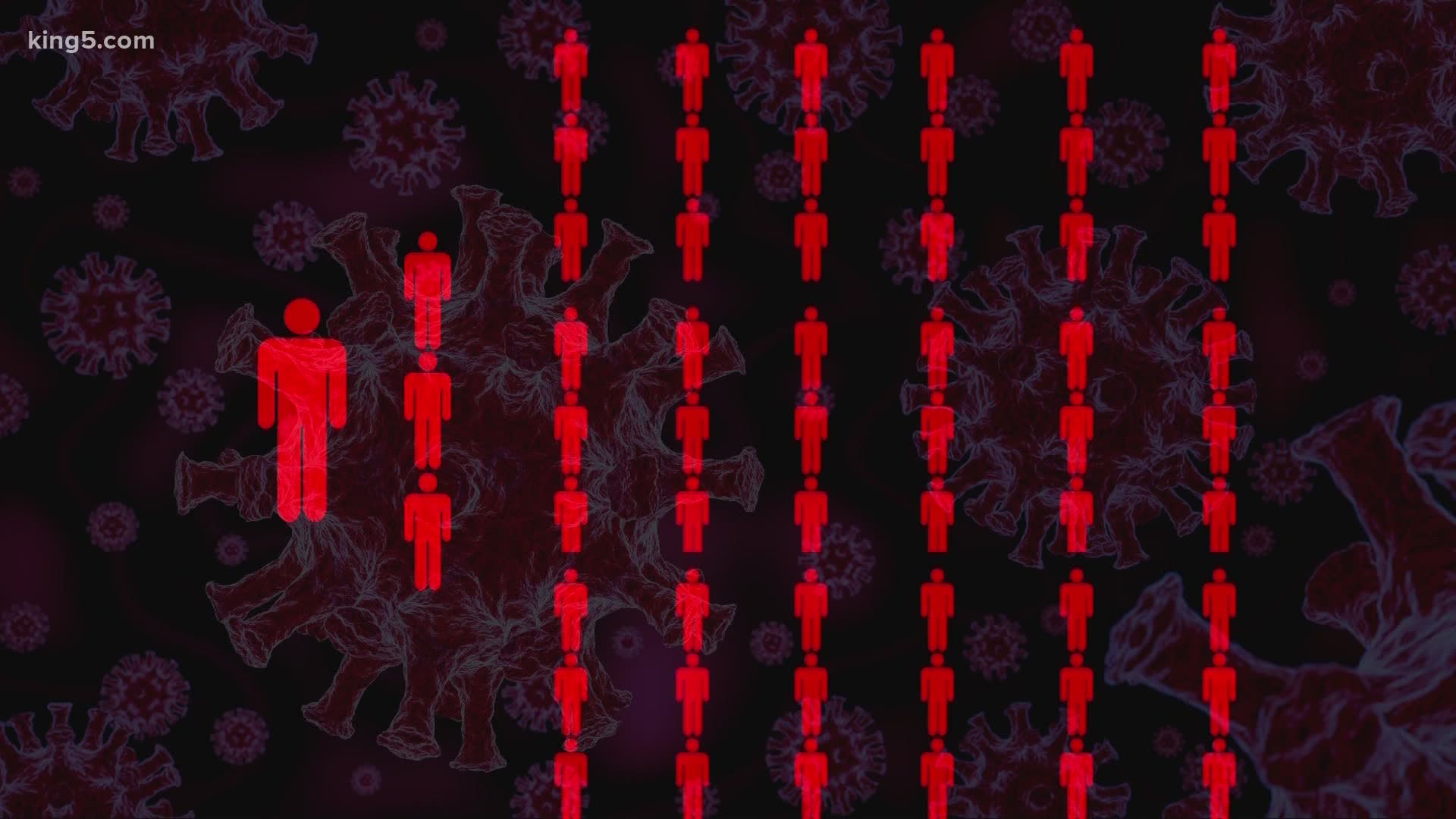When the coronavirus was spreading at its peak, it’s estimated that one infected individual could spread it to as many as three other people, who would spread it to three more, and those folks to three more
The virus was compounding and spreading at a staggering clip.
But what if the one patient could, mathematically speaking, spread it to less than one other person, who in turn would spread it to less than one person. At that rate, the virus would actually disappear.
It’s often referred to as R, the reproductive rate in which the virus spreads or doesn’t.
The baseline is 1, meaning that's the rate at which one person spreads it to just one another person. When R is 1, the infection rate is stable, but it’s not going down, either.
If R could be less than 1, then that would mean that coronavirus would be on the decline.
At last count, the R-value for both sides of Washington state showed the disease continues to spread.
It also takes enough data history to calculate this indicator. The last count was done as of June 5.




It’s a complex number to calculate and is just one number used by public health professionals to get a sense of how much damage the virus is doing and where it is heading.
Other metrics are positive cases among the total number tested, hospitalizations, and the most unfortunate statistic of all, how many people the virus kills.
As of this week, the R estimate remains at 1.1 in Western Washington and 1.2 in Eastern Washington, which means that the virus appears to continue to spread and infect a growing number of people.
“Until we are solidly below one, there is cause for concern,” said Janet Baseman, the associate dean for public health practice at the University of Washington School of Public Health. “The measure, the reproductive number helps us to understand if the epidemic is growing or shrinking in our area.”
The state's most up-to-date R estimates are at the state's coronavirus risk assessment dashboard. To find it, select the COVID_19 Disease Activity tab, and then choose the option to see the effective reproductive number (R) on the left.

